Subcapsular cataract - Anterior subcapsular cataract - Posterior subcapsular cataract 2. Posterior subcapsular cataracts occur in front of the posterior capsule.
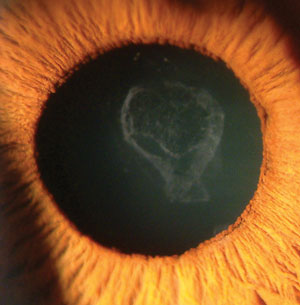
No Kidding Around Managing Pediatric And Early Onset Cataract

Posterior Subcapsular Cataract Sonoran Desert Eye Center

Posterior Subcapsular Columbia Ophthalmology
Our ophthalmologists are experts at cataract surgery and well personalize your treatment for your unique needs.
Posterior subcapsular cataract. What is Posterior Subcapsular Cataract. Theyre directly in the path of light as. Posterior subcapsular cataract PSC Also best graded while visualizing with retroillumination.
A cataract is a clouding of the eyes natural lens which lies behind the iris and the pupil. A cataract is a dense cloudy area that forms in the lens of the eye. Nuclear Sclerosis Cataracts Center of Lens The nuclear sclerotic cataract also known as a nuclear cataract is the most common type of cataract and it generally is brought on as a result of advancing age.
We are offering complete eye care solution since 1957. Cataracts usually develop in both eyes but sometimes they only affect one. Lenticonus lenticonus lentĭ-konus lens L.
The Singapore Malay Eye Study further determined patients with high myopia have 3 to 5 times increased risk of nuclear cataracts and a 30 increased risk of having posterior subcapsular cataracts. Polar cataract - Central posterior part of the lens MORPHOLOGICAL CLASSIFICATION 14. Posterior subcapsular polar age-related cataract unspecified eye.
A nuclear cataract is caused by central opacity in the lens and has a substantial genetic component. The following information is based on the combined clinical trial results from 3 initial. Yellow to brown coloration 3.
It causes a small. Nuclear cataract - Involves the nucleus of lens. A cortical cataract involves the anterior posterior or equatorial cortex of the lens.
Retinal Vein Occlusion and Posterior Segment Uveitis. Posterior subcapsular cataracts These form just inside the back of your lens capsule the part of your eye that surrounds the lens and holds it in place. Like CS PSC may be difficult to retroilluminate if there is a dense concurrent NS cataractWHO criteria graded on vertical height in mm.
A posterior subcapsular cataract often interferes with your reading vision reduces your vision in bright light and causes glare or halos around lights at night. This type of cataract can occur alone or in combination with other types of cataracts as well. The Blue Mountains Eye Study also found that moderate and high myopia especially with onset prior to age 20 are associated with posterior subcapsular cataract formation.
Cortical cataract - Wedge shaped or radial spoke-like opacities. Book an appointment now. For the oldest age group 75 y nuclear cortical and posterior subcapsular cataracts were found in 655 277.
Cataract surgery is a safe and regularly performed surgery. This article will discuss the three most common types of cataracts nuclear cortical and posterior subcapsular as well as other less common types including anterior subcapsular posterior polar traumatic congenital and polychromatic. If this occurs your vision will decrease and you will need an operation to remove the cataract and restore your vision.
Posterior Subcapsular cataract is a type of cataract where in there is opacification in the posterior or back portion of the crystalline lens. If left untreated posterior subcapsular cataracts may result in significant impairment of vision and can progress to the point of blindness. The nuclear type is more common in the older population 2 whereas the posterior subcapsular PSC type can manifest at any age.
A cataract is a dense cloudy area that forms in the lens of the eye. A cataract begins when proteins in the eye form clumps that prevent the lens from sending clear images to the retina. Defects posterior subcapsular cataract formation secondary ocular infection from pathogens including herpes simplex and perforation of the globe where there is thinning of the cornea or sclera.
Use of corticosteroids including OZURDEX may produce posterior subcapsular cataracts increased eye pressure glaucoma and may increase the establishment of secondary eye infections due to bacteria. If the bulging is spherical instead of conical the condition is referred to as lentiglobus. Posterior capsular opacification also known as after-cataract is a condition in which months or years after successful cataract surgery vision deteriorates or problems with glare and light scattering recur usually due to thickening of the back or posterior capsule surrounding the implanted lens so-called posterior lens capsule opacification.
The overall rates of senile cataract in general and of its 3 main types ie nuclear cortical posterior subcapsular rapidly increased with age. Posterior subcapsular cataracts develop at the central back surface of the lens. Nuclear cortical subcapsular anterior and posterior and mixed.
To correct your vision one of our eye surgeons will remove your affected lens and replace it with an. 2016 2017 2018 2019 2020 2021 2022 BillableSpecific Code Adult Dx 15-124 years. Code for adverse effect if applicable to identify drug T36-T50 with fifth or sixth character 5.
The conus may occur anteriorly or posteriorly. Posterior subcapsular cataracts are located beneath the posterior lens capsule and affect vision out of proportion to the degree of cloudiness that is seen because the cataract is located at the crossing point of the light rays from the viewed object. Anterior chamber ACA.
Additional Common Optometry Abbreviations A or Acc. H25049 is a. A posterior subcapsular cataract starts as a small opaque area that usually forms near the back of the lens right in the path of light.
It can reach a diameter of 2 to 7 mm. Cataract types are defined by their specific location of opacity or clouding within the anatomical lens and include. While the majority of cataracts in the population are age-related or senile cataracts there are many types and causes of cataract.
Agarwals is one of the best eye hospitals in cities like Chennai Bangalore Hyderabad More. The 95 tolerance limits are reduced from 20 for each class with LOCS II to 07 for nuclear opalescence 07 for nuclear color 05 for cortical cataract and 10 for posterior subcapsular cataract with the LOCS III with excellent interobserver agreement. Conus cone is a rare congenital anomaly of the eye characterized by a conical protrusion on the crystalline lens capsule and the underlying cortex.
Taking steroids can cause a cataract type doctors call posterior subcapsular cataracts.
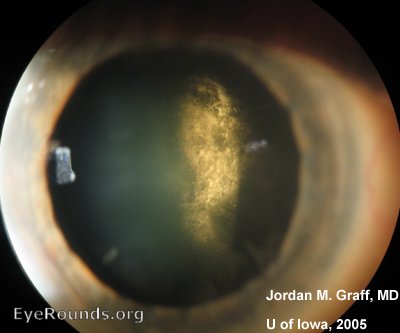
Posterior Subcapsular Cataract Eyerounds Org Online Ophthalmic Atlas
Posterior Polar Cataract Eyerounds Org Ophthalmology The University Of Iowa
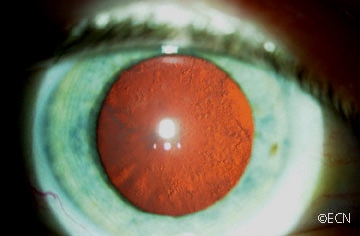
Radiation Associated Posterior Subcapsular Psc Cataract New York Eye Cancer Center
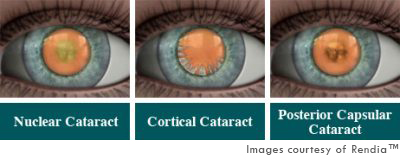
How To Diagnose And Grade Cataracts Eyeguru

Lens Opacity Detection For Serious Posterior Subcapsular Cataract Springerlink
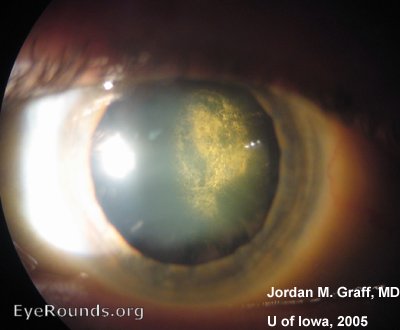
Posterior Subcapsular Cataract Eyerounds Org Online Ophthalmic Atlas

Posterior Subcapsular Cataract Of Right Eye Figure 3 Posterior Download Scientific Diagram
Posterior Polar Cataract Eyerounds Org Ophthalmology The University Of Iowa
